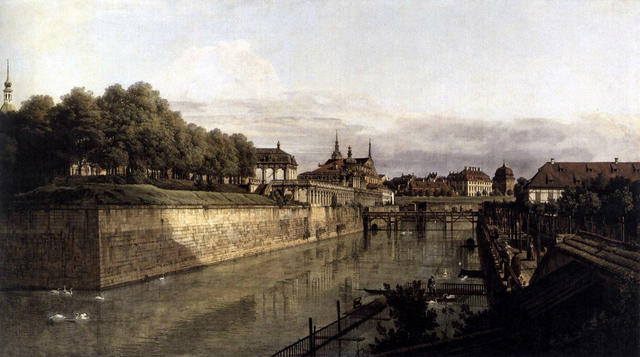Three years ago I went to see a large exhibition of Bernardo Bellotto’s topographical pictures at the Museo Correr in Venice. I had admired this underrated artist’s work on the few occasions when I had come across it before; but seeing so many of his pictures together for the first time made me realise, belatedly, that Bellotto was more than merely admirable. He was one of the great painters. Part of the reason for his relative obscurity is the fact that many of his best works were painted for the court of Dresden, and have mostly remained in that city since they were created in the middle years of the eighteenth century. A number are currently on loan to the Royal Academy as part of an exhibition of “Masterpieces from Dresden”. This week’s picture is (just about) my personal favourite among those on display. It was painted sometime between 1749 and 1753 and goes under the prosaic title of The Moat of the Zwinger in Dresden.
Bernardo Bellotto was born in Venice in 1722. His father was a civil servant, his uncle the well known painter of views of the city, Antonio Canale, known as Canaletto. Bellotto learned to paint in Canaletto’s workshop before moving away to practise his trade elsewhere – the better, perhaps, to establish his own individuality as an artist. His gifts were soon recognised. In 1748 Augustus III, Elector of Saxony, bestowed on him the title of principal court painter, giving him a large annual salary and sealing the deal with the gift of a diamond-studded gold snuffbox containing 300 gold louis. In return Bellotto painted a multitude of views of Dresden, Augustus III’s capital. The ruler had ambitious plans for his city, constructing new palaces, new academies of art and music, and a new...


